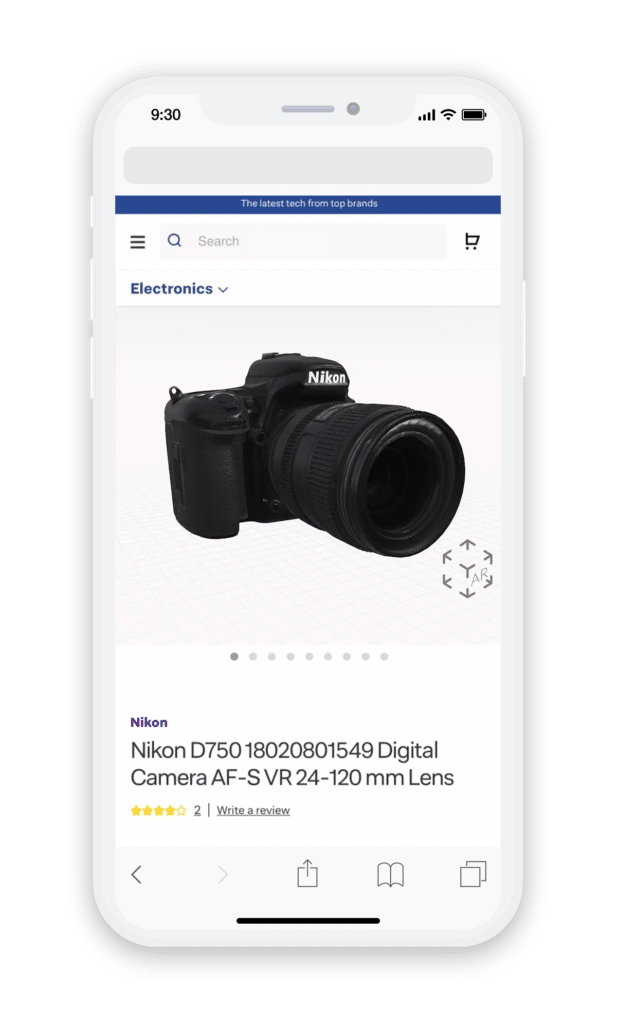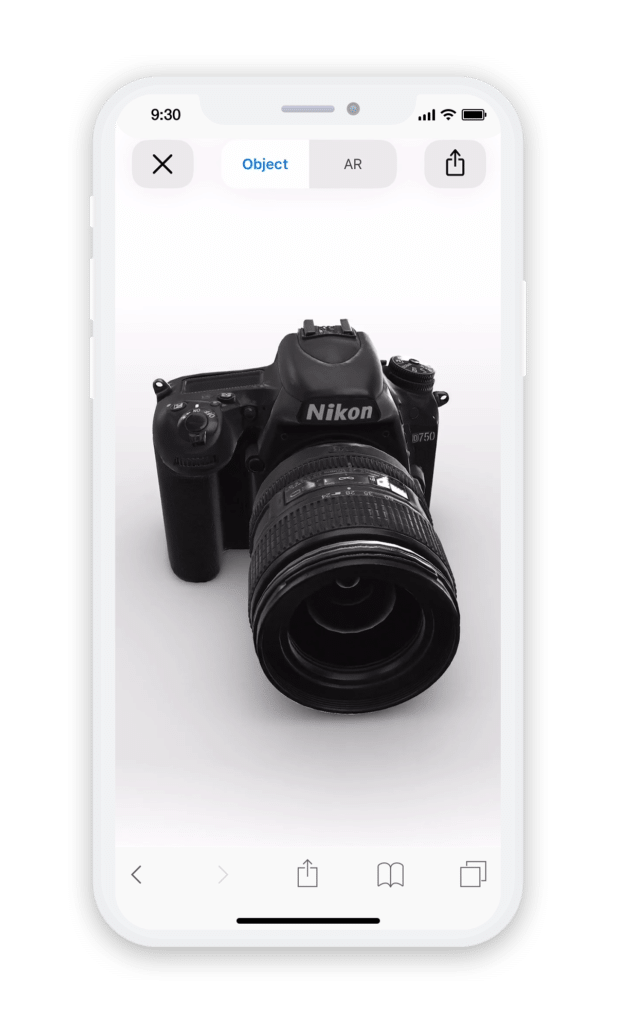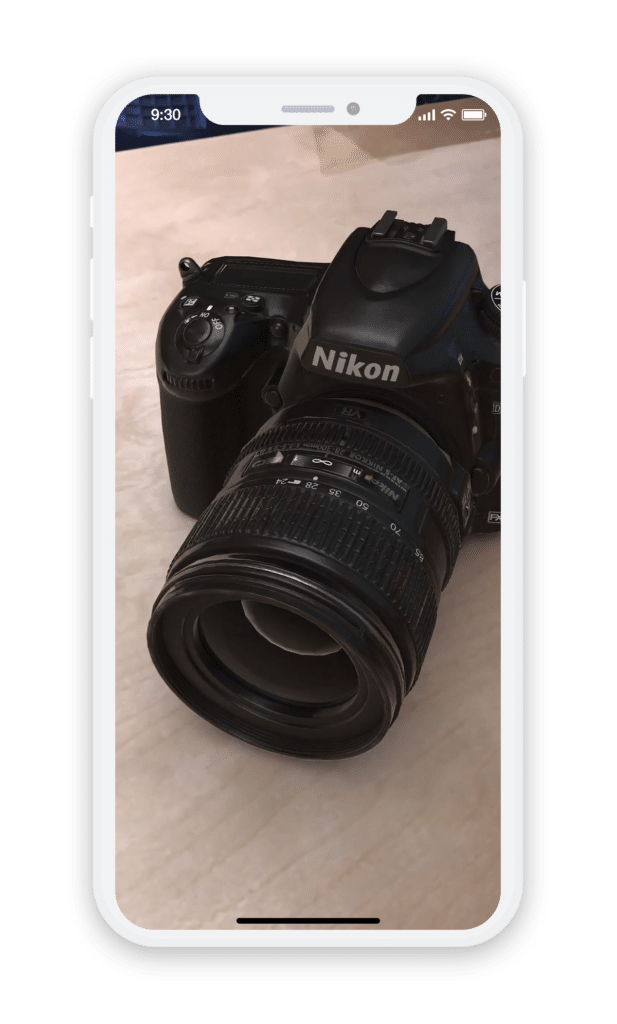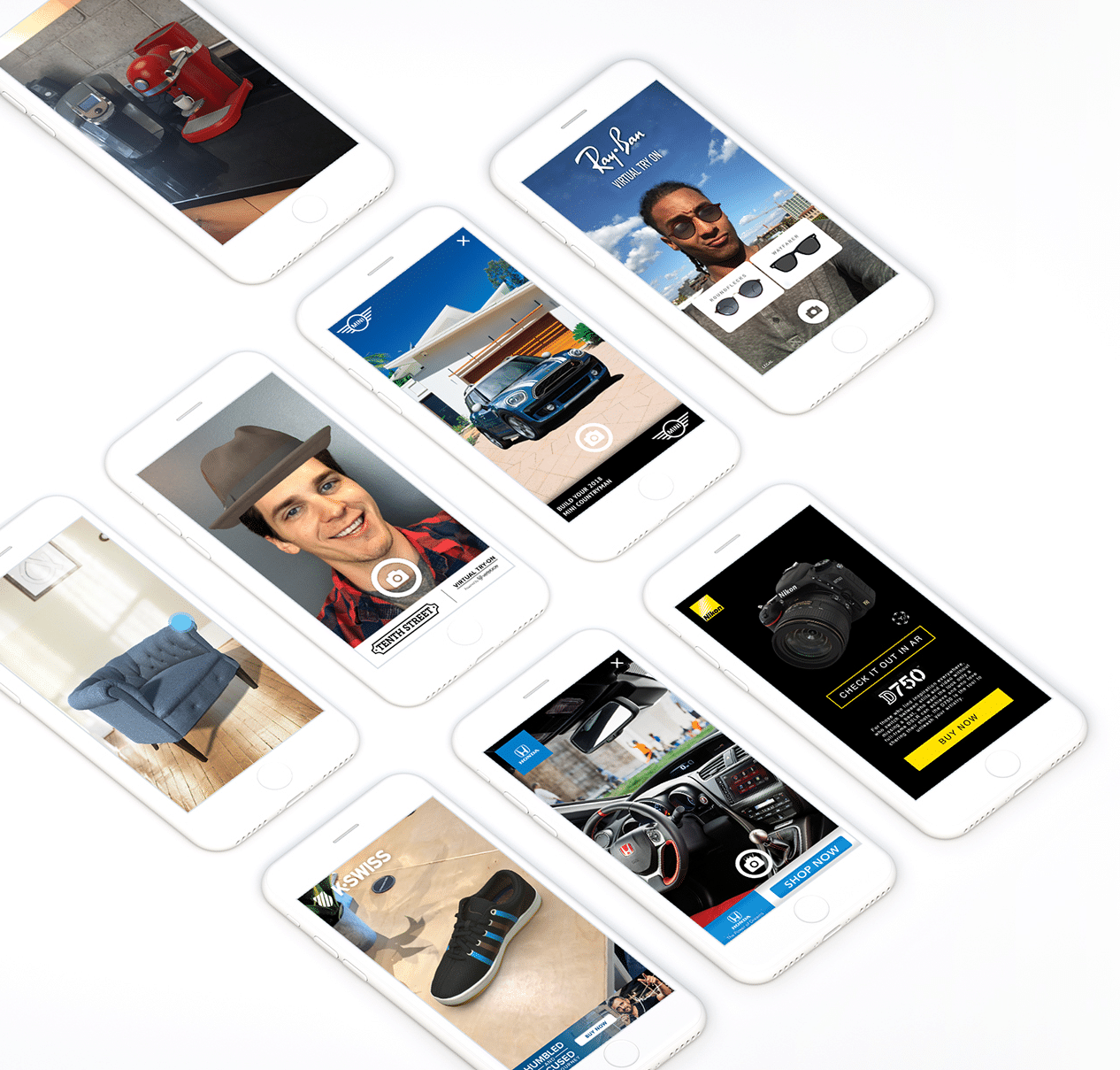We created a guide to Immersive Commerce for brands & retailers to better understand the lay of the 3D & AR land and how they can be a part of it.
In the last decade, technology has dramatically transformed the ecommerce experience. Better devices, smarter software, mobile electronic payment systems, wider accessibility, and faster connectivity are just a few of the developments that have driven mobile commerce adoption among consumers. Meanwhile, consumer expectations seem to increase reflexively with technological advancements. Innovation breeds creativity and ideation, and consumers have been conditioned to expect as much from retailers. Immersive media as part of the shopping journey is one of these expectations, as it is now widely accessible to anyone with a camera-enabled smartphone and an internet connection. It makes sense–being able to view online products in 3D and in the real world via augmented reality (AR). But as immersive commerce grows in popularity, many retailers are still unsure of what the benefits are and how best to go about implementing 3D and AR into their own purchase journey.
To help with that, we created this guide to 3D & AR for ecommerce. We’ll walk through what immersive commerce is, who should use it, the challenges and benefits retailers can expect, and finally best practices for moving forward. Let’s start with the basics.
What is immersive commerce?
Immersive commerce refers to the implementation of manipulable 3D and AR directly on a branded product page. In other words, immersive commerce means using 3D product models in the place of 2D photos with the option to tap to augmented reality. In this guide, we’re referring to web-based immersive commerce, but in-app is an option as well for brands with retail applications.
An immersive ecommerce user experience may look something like this:
- In search of a new camera for an upcoming vacation, Stacy is browsing online product pages on her mobile phone. She taps into a particular product page for a Nikon DLSR that catches her eye. In place of 2D product photos of the camera, Stacy finds a manipulable 3D model. She can rotate, scale, and explore the camera model directly on the product page at her leisure.
- From there, Stacy can tap to a full-screen 3D camera model on a white background to examine it further. This removes the product page info and, similar to an expanded view of a 2D photo, allows her to get a full-screen view of the 3D camera. She has more room on her screen to zoom into the model, accessing details as well as a holistic view of the camera from every angle.
- Finally, Stacy can tap to AR, which means placing the 3D camera in her place. She can move around the camera, up close in great detail, to fully understand what ownership of this camera looks like.



In this particular example, Stacy is using the rear-facing camera of her phone, but if the product were something to be tried on a person, such as sunglasses, the front-facing camera would be engaged. At Vertebrae, we call these formats Space and Face, respectively.
Retailers can implement 3D and AR ecommerce or one without the other, but to fully leverage the power of the medium, we’d recommend both. 3D and AR enhance the purchase journey in different ways. 3D, by nature, provides a wealth of product information, creating access to angles and scale that was previously unavailable. Meanwhile, AR allows users to simulate ownership of a product, as was demonstrated in our camera example.
What industries are best suited to 3D & AR for eCommerce?
Nearly all brands can benefit from implementing 3D & AR into their marketing strategies, enabling a “wow factor” with lasting results, but when it comes to ecommerce, the use cases are more defined. Essentially, products that are complex in nature, need to be a certain size or shape to fit in a space, or are at a higher price point are a good fit for immersive commerce. This includes verticals such as furniture/housewares, electronics, appliances, sporting goods/equipment, fashion, art, musical instruments, auto, and so on. On the flip side, products that are at a lower price point, are particularly fast-moving, or are not physical products at all, are unlikely to benefit from immersive commerce implementations. These include verticals such as food & beverage, CPG, toiletries, cosmetics, b2b software solutions, and service-based products.

What are the limitations?
The technology enabling immersive media is still new, and complicated, which means there is a steep learning curve to tackling AR implementation at scale–especially for retailers attempting to do this in-house. That said, it is evolving quickly and regularly. Apple’s ARkit opened the door for most AR experiences on Safari and iOS. There are also a variety of companies who offer AR SDKs to make any app AR-ready. Web-based AR, especially in the case of ecommerce, has the most reach, but in order to be accessible to consumers across devices and browsers, web-based computer vision libraries are a requirement, something Vertebrae, as an AR company, has spent some time developing.
Web AR experiences are essentially AR-enabled web pages, using Javascript to package and deploy computer vision libraries and AR creative. WebAR was only recently made possible thanks to updates including WebRTC, a protocol that allows browsers to request camera access from a user. WebAR works on both Android & iOS devices and across all major browsers–another reason to push for web-based AR ecommerce experiences.
And the benefits?
Given what we know about the cost of acquiring new customers versus encouraging current customers to spend more, saavy brands are looking to increase LTVs. An obvious choice for this is to create a better shopping experience. Simple, but not easy. This is where immersive commerce comes in. As mentioned earlier, manipulable 3D (as in 3D that consumers can interact with) provides exponentially more product information than 2D photos, while AR provides realism. By placing a product in a consumer’s space, she is able to contextualize that product to her experience. Does it fit her aesthetic? Her life? Is it as detailed as she was expecting? As simple? This amplification of product information and understanding on behalf of the consumer not only leads to increased conversion, but also to a likely reduction in returns, as consumers have a better gauge on the actualities of the physical product.
How can brands get started with 3D and AR eCommerce?
Brands have two options for integrating immersive media into their current ecommerce strategies: to buy or to build. To make this decision, it helps to understand the requirements for implementing 3D & AR commerce effectively.
Creative Process
Both 3D & AR experiences require high-quality 3D product models. These models need to be created, optimized for web or app, and in varying file formats depending on distribution. They need to be updated with product and potentially technology updates, and they need to be accessible for previewing and deploying. There are a variety of techniques for 3D asset creation, including photogrammetry, laser scanning, and 3D modeling. Brands with in-house creative teams or who are already working with 3D models may have this sorted out. If not, it probably makes sense to partner with someone who does. For more information on the basics of 3D modeling, check out our recent post, 3D Modeling for AR eCommerce. A substantial creative pipeline is key to any 3D or AR strategy. Without it, brands will likely get bogged down fairly quickly with an unmanageable 3D asset workload.
Seamless Integration
Implementing 3D models on the site may be as simple as a few lines of javascript, but that’s only the case with a well-organized platform approach, which includes hosting and speedy delivery of the 3D models to an iframe when they are called. According to a Google study completed in 2017, 53% of mobile site visitors will leave a page that takes longer than 3 seconds to load. Immersive commerce is as effective as it is available, which is to say that a proper, scalable integration of 3D & AR is paramount for not slowing down a web page or disrupting a consumer experience.
Data Capture
The opportunities for data around 3D and AR interactions are endless, so any integration should also include data capture and analysis. For example, retailer Tenth Street Hats saw a 33% conversion lift and 74% increase in engagement after implementing immersive commerce on their website. Immersive commerce creates better opportunities for consumers to understand products while enabling retailers to better understand consumer perception of those same products. This type of measurable interactivity hasn’t been available outside of focus groups until now.
Whether in-house or outsourced, these 3 factors are necessities for launching an effective immersive commerce strategy. For more about why immersive commerce works, download our Whitepaper: Traditional vs Immersive Media.
Not a current customer but ready to get started?
Demo the Platform Today!Already a current customer? Log in to Axis Today!

